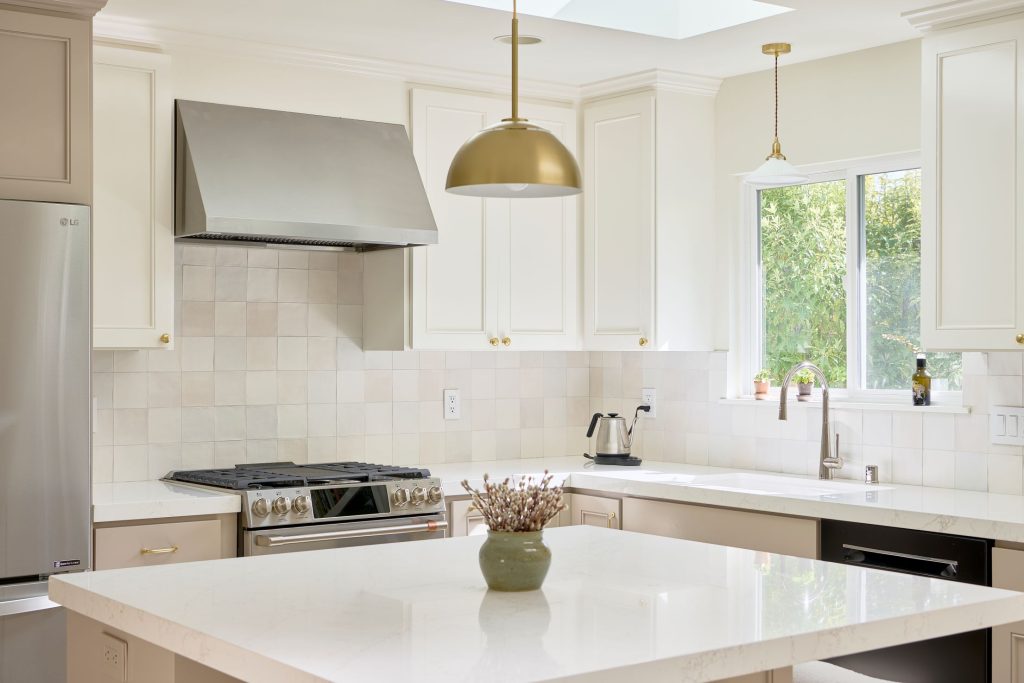
As we move into 2023, many homeowners are looking for ways to update and modernize their kitchen spaces. One of the easiest and most impactful ways to do this is by upgrading your kitchen countertop. Countertops not only serve a functional purpose but also add style and personality to your kitchen. In this blog post, we will discuss the latest kitchen countertop trends for 2023 that will elevate your kitchen space.
Quartz countertops are a popular choice for homeowners and designers alike, and it will stay in 2023. Quartz is a durable and low-maintenance material that comes in a variety of colors and patterns, making it easy to find the perfect fit for your kitchen. Plus, it’s non-porous, meaning it won’t absorb liquids, and it’s resistant to scratches, stains, and heat.
Quartz kitchen countertops have become increasingly popular due to its durability, low maintenance, and aesthetic appeal. However, there are both pros and cons to consider before choosing quartz countertops for your kitchen.
Here are some of the main advantages and disadvantages:
Durability:
Quartz countertops are highly durable and resistant to scratches, stains, and heat.
Low Maintenance:
Unlike natural stone countertops, quartz requires very little maintenance and does not need to be sealed regularly.
Non-Porous:
Quartz is a non-porous material, which means it is highly resistant to bacteria and other microorganisms. This makes it a great choice for kitchens and other areas where hygiene is a concern.
Aesthetic Appeal:
Quartz is available in a wide range of colors and patterns, so it’s easy to find a style that matches your design preferences.
Cost:
Quartz countertops are typically more expensive than other materials, such as laminate or tile.
Susceptible to damage from heat:
While quartz is generally resistant to heat, it can be damaged by high temperatures. It’s important to use trivets or other heat-resistant materials to protect the surface.
Limited design options:
While quartz comes in a wide range of colors and patterns, it does not have the natural variations that can be found in other materials like granite or marble.
Environmental impact:
Quartz is not a renewable resource, and the mining and production of quartz countertops can have a negative impact on the environment.
Quartz kitchen countertops can be a great choice for those who value durability, low maintenance, and aesthetic appeal. However, it’s important to consider both the pros and cons before making a decision.
In 2023, bold and vibrant colors will be a popular choice for kitchen countertops. From deep blues to bright greens, homeowners are looking for ways to add personality to their kitchens. Bold countertops can be paired with neutral cabinets and backsplashes to create a striking contrast and a unique look.
Bold colors kitchen countertops can add a unique and striking look to your kitchen. However, there are both pros and cons to using bold colors for your countertops.
Here are some of the main advantages and disadvantages to consider:
Aesthetically pleasing:
Bold colors can create a striking and memorable design statement in your kitchen.
Versatile:
Bold colors can be paired with a wide range of other design elements, including cabinets, backsplashes, and flooring.
Easy to clean:
Bold colors are typically made of non-porous materials like quartz or solid surface, which makes them easy to clean and maintain.
Customizable:
Many manufacturers offer a range of bold color options, and some even allow you to customize the color to match your design preferences.
Cost:
Bold color countertops can be more expensive than more traditional colors like white or black.
Limited resale value:
Bold colors may not appeal to all potential buyers, which could make it harder to sell your home in the future.
Limited design options:
Bold colors can limit your design options, as certain colors may clash with other elements in your kitchen.
Maintenance:
While bold color countertops are easy to clean, they may require more maintenance than other colors to keep them looking their best.
Overall, bold color kitchen countertops can be a great choice if you’re looking for a unique and striking design element in your kitchen. However, it’s important to consider both the pros and cons before making a decision.
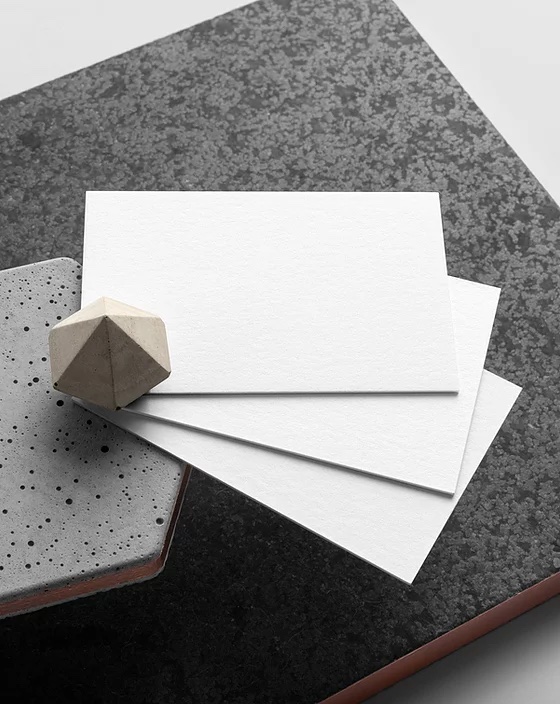
Natural stone Kitchen countertops, such as marble and granite, have been a popular choice for many years, and they are not going anywhere in 2023. Natural stone adds a timeless elegance to any kitchen and comes in a variety of colors and patterns. Plus, each piece of stone is unique, meaning your countertop will be one-of-a-kind. However, there are both pros and cons to using natural stone for your countertops.
Here are some of the main advantages and disadvantages to consider:
Durability:
Natural stone countertops are highly durable and resistant to scratches and heat.
Aesthetic appeal:
Natural stone countertops have a unique, natural beauty and can add value to your home.
Variety of colors and patterns:
Natural stone countertops come in a wide variety of colors and patterns, so it’s easy to find a style that matches your design preferences.
Resistant to bacteria:
Natural stone is a non-porous material, which means it is highly resistant to bacteria and other microorganisms. This makes it a great choice for kitchens and other areas where hygiene is a concern.
Cost:
Natural stone countertops can be expensive, especially if you choose high-end materials like marble or exotic granite.
Susceptible to staining:
Natural stone countertops can be susceptible to staining, especially if they are not sealed properly.
High maintenance:
Natural stone countertops require regular maintenance, including sealing, to keep them looking their best.
Susceptible to damage from heat:
While natural stone is generally heat-resistant, it can be damaged by high temperatures.
Overall, natural stone kitchen countertops can be a great choice if you’re looking for durability, natural beauty, and a wide range of colors and patterns. However, it’s important to consider both the pros and cons before making a decision.
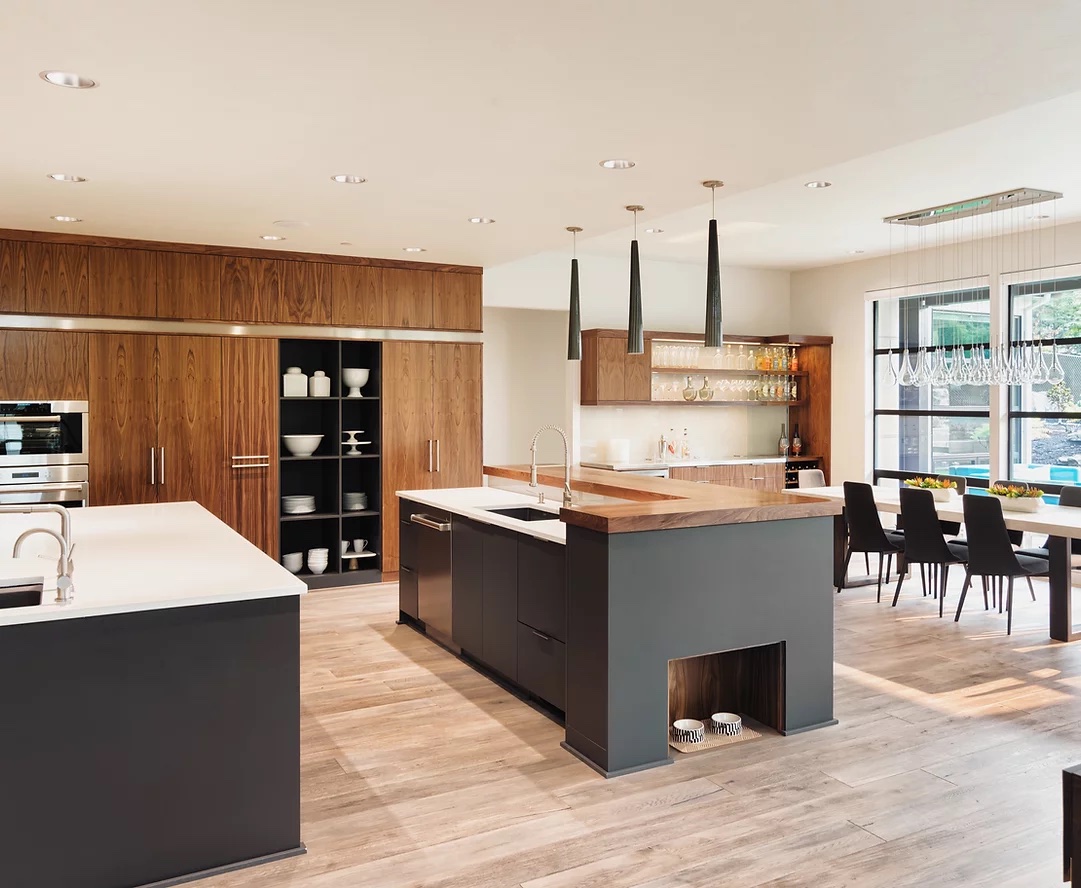
Matte finish kitchen countertops don’t show fingerprints or water spots like glossy finishes do. Matte finishes can be found in a variety of materials, including quartz and natural stone. It have been growing in popularity due to their unique look and practicality.
However, like any other finish, there are pros and cons to consider. Here are some of the main advantages and disadvantages to using a matte finish for your kitchen countertops:
Unique look:
Matte finishes offer a different aesthetic than the traditional glossy finish, giving your kitchen a distinctive and modern look.
Hides imperfections:
Matte finishes can hide scratches, fingerprints, and other marks that would be more visible on a glossy surface.
Low maintenance:
Matte finishes require less maintenance compared to glossy surfaces, as they don’t show fingerprints and water spots as easily.
Anti-glare:
Matte finishes reduce the glare and reflection that glossy finishes can create, which can make it easier to see what you are preparing or cooking.
Stains and marks:
Matte finishes can be more prone to staining and leaving marks, such as oil and water rings, compared to glossy finishes.
Limited cleaning products:
You need to avoid using abrasive cleaning products, such as bleach or scouring pads, on matte finishes as they can damage or leave marks on the surface.
Limited color choices:
Matte finishes are not as widely available as glossy finishes, which means there may be fewer color options to choose from.
Can appear dull:
While matte finishes have a unique look, they may appear dull to some people and not have the same “pop” as a glossy finish.
Overall, matte finishes can be a great choice for those who want a unique, modern look for their kitchen countertops with minimal maintenance. However, it’s important to consider both the pros and cons before making a decision.
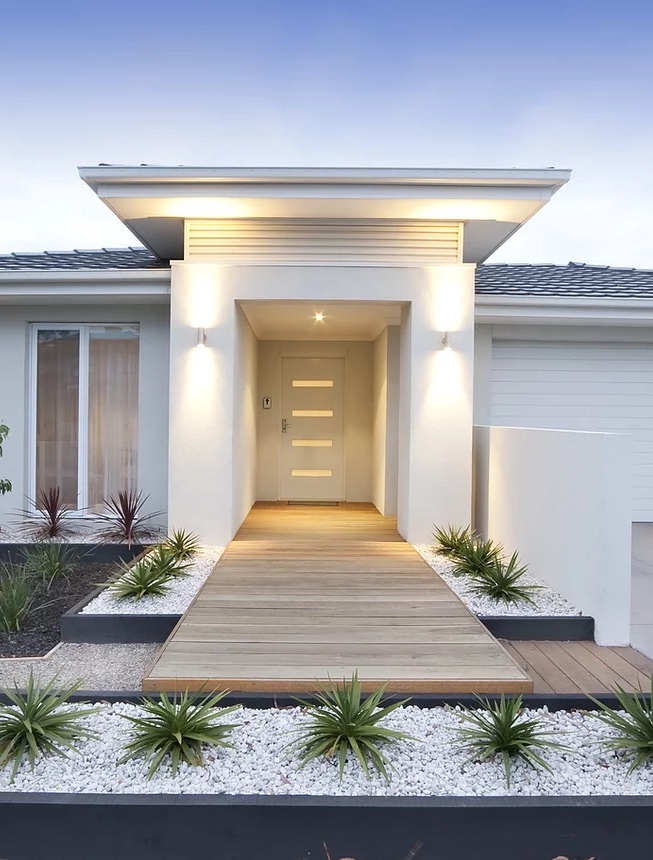
Mixing different materials on your countertops is a trend that is gaining popularity in 2023. Homeowners are combining materials such as wood, metal, and stone to create a unique look that reflects their personal style. This trend can be seen in kitchen islands, where one material is used for the countertop and another for the base.
However, like any other material, there are pros and cons to consider before choosing a mixed material for your kitchen countertops. Here are some of the main advantages and disadvantages of using mixed materials for your kitchen countertops:
Unique look:
Mixed materials provide a unique and personalized look to the kitchen that can be customized according to your preferences.
Versatility:
Mixed materials can be combined with different colors, patterns, and textures to achieve a desired look.
Durability:
Some mixed materials, such as concrete or quartz, offer durability and strength that other materials may not provide.
Resale value:
Combining high-end materials can increase the value of your kitchen and add resale value to your home.
Cost:
Mixed materials can be more expensive than traditional materials like granite or quartz.
Installation:
Installing mixed materials can be more complicated and time-consuming than traditional materials.
Cleaning and maintenance:
Cleaning and maintaining mixed materials can be more difficult, as each material may require different cleaning methods and maintenance routines.
Limited availability:
Some materials may be harder to source or may not be available in certain areas, limiting your design choices.
Mixed materials can be a great choice for those who want a unique and personalized look for their kitchen countertops. However, it’s important to consider both the pros and cons before making a decision.

Waterfall edges are a popular trend in kitchen design, and they will continue to be in 2023. A waterfall edge is when the countertop material extends down the sides of the island or countertop, creating a seamless look. This design element adds a modern touch to any kitchen and can be found in a variety of materials, including quartz and natural stone.
There are both advantages and disadvantages to consider before choosing a waterfall edge for your kitchen countertops. Here are some of the main pros and cons:
Aesthetic appeal:
Waterfall edges have a unique and modern look that can add a touch of elegance and sophistication to your kitchen.
Seamless design:
Waterfall edges provide a seamless transition from the countertop to the floor, creating a continuous and cohesive look.
Durable:
Waterfall edges can add extra durability to your countertops, as they help protect the edges from chipping and cracking.
Easy to clean:
The smooth and continuous surface of a waterfall edge makes it easy to clean and maintain.
Cost:
Waterfall edges can be more expensive than traditional countertop edges, as they require more material and labor to install.
Limited styles:
Waterfall edges may not be suitable for all kitchen styles and may limit your design choices.
May not be practical:
Waterfall edges may not be practical for all kitchen layouts, especially in smaller kitchens where space is limited.
Installation challenges:
Installing a waterfall edge can be more complex and time-consuming than installing a traditional edge, requiring more experienced professionals.
Waterfall edges can be a great choice for those who want a modern and elegant look for their kitchen countertops. However, it’s important to consider both the pros and cons before making a decision, especially in terms of cost and practicality.
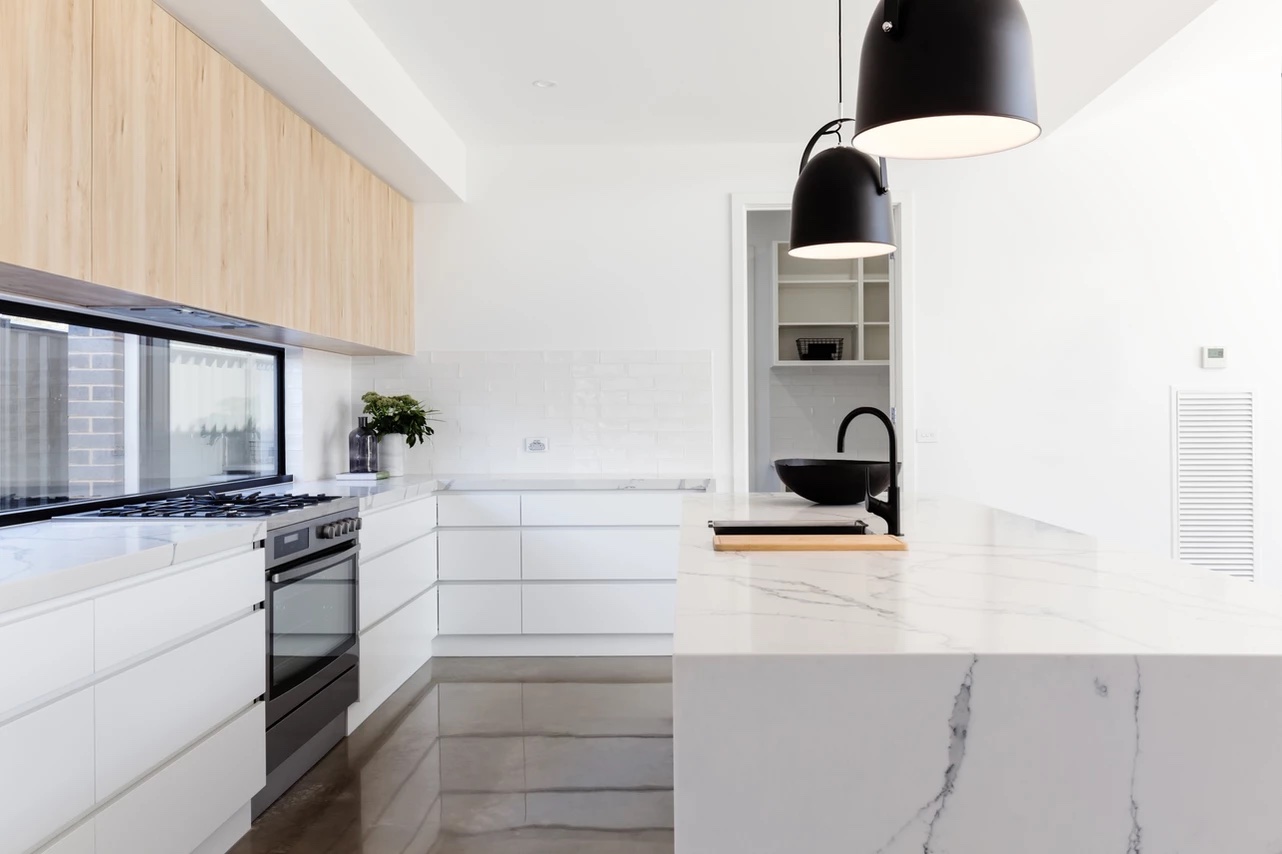
A leathered finish is created by brushing the surface of the stone, giving it a textured and matte appearance. Leathered finishes add a unique touch to any kitchen and can be found in a variety of natural stone materials.
Leathered finishes on kitchen countertops are a popular design trend that offers a unique look and feel. However, as with any countertop finish, there are pros and cons to consider before choosing a leathered finish.
Here are some pros and cons of leathered finishes on kitchen countertops:
Unique texture:
Leathered finishes have a unique texture that adds visual interest to the kitchen and creates a unique feel that is different from other countertop finishes.
Hides imperfections:
Leathered finishes can hide imperfections in the countertop material, such as scratches or etches, making them ideal for high-traffic areas.
Less reflective:
Unlike polished finishes, leathered finishes are less reflective, making them a good choice for kitchens with a lot of natural light or open windows.
Soft to the touch:
The leathered finish is smooth to the touch, making it pleasant to work on and comfortable to lean on.
Requires regular maintenance:
Leathered finishes require regular maintenance to prevent staining and etching, as the texture of the finish can trap dirt and spills.
Can be more expensive:
Leathered finishes can be more expensive than polished finishes, as the process of achieving a leathered finish is more labor-intensive.
Not as easy to clean:
The textured surface of a leathered finish can make it more difficult to clean than a polished finish, as dirt and spills can become trapped in the texture.
Can be more susceptible to staining:
The texture of a leathered finish can make it more susceptible to staining and etching than a polished finish.
Leathered finishes on kitchen countertops offer a unique look and feel, but require regular maintenance and may be more expensive than other finishes. Homeowners should carefully consider their needs and preferences before choosing a leathered finish for their kitchen
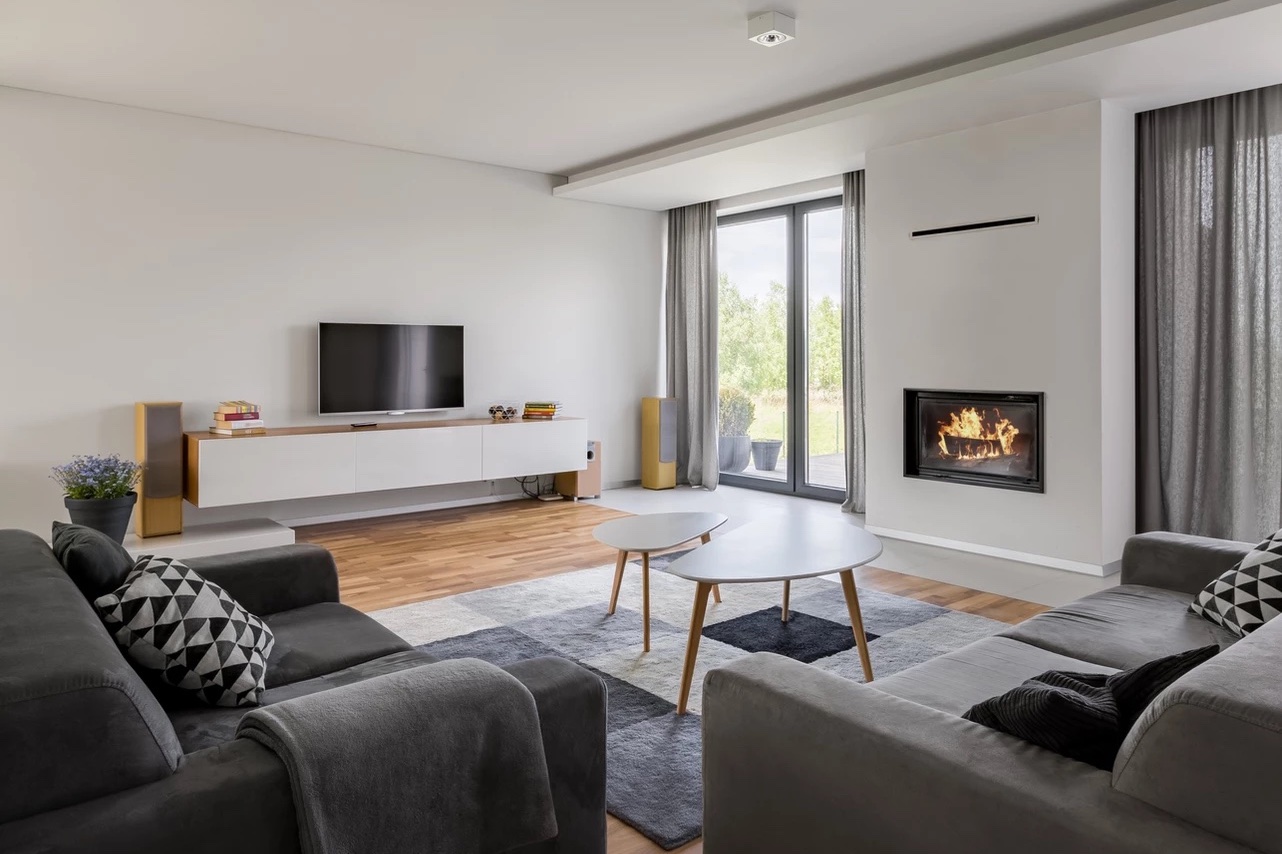
Thin countertops offer a sleek and modern look and can be found in a variety of materials, including quartz and natural stone. Thin countertops can also be more budget-friendly than thicker countertops, making them a popular choice for homeowners on a budget.
However, as with any countertop material, there are pros and cons to consider before choosing a thin countertop.
Here are some pros and cons of thin kitchen countertops:
Sleek and modern look:
Thin countertops offer a sleek and modern look that is popular in contemporary kitchen designs.
Lightweight:
Thin countertops are lighter in weight than traditional countertops, making them easier to install and move.
Cost-effective:
Thin countertops can be more cost-effective than traditional countertops, as they require less material to produce.
Flexible:
Thin countertops can be made from a variety of materials, including laminates, concrete, and porcelain, offering homeowners more options to choose from.
Less durable:
Thin countertops are less durable than traditional countertops, as they are more susceptible to cracking and chipping.
Limited in size:
Thin countertops are limited in size, and may not be suitable for larger kitchens or countertops with overhangs.
Limited in design:
Thin countertops may be limited in design options, as they may not be able to accommodate certain edge profiles or finishes.
May require additional support:
Thin countertops may require additional support, such as plywood or steel, to prevent cracking or sagging.
Thin kitchen countertops offer a sleek and modern look at a potentially lower cost, but may be less durable and limited in size and design options. Homeowners should carefully consider their needs and preferences before choosing a thin kitchen countertop.
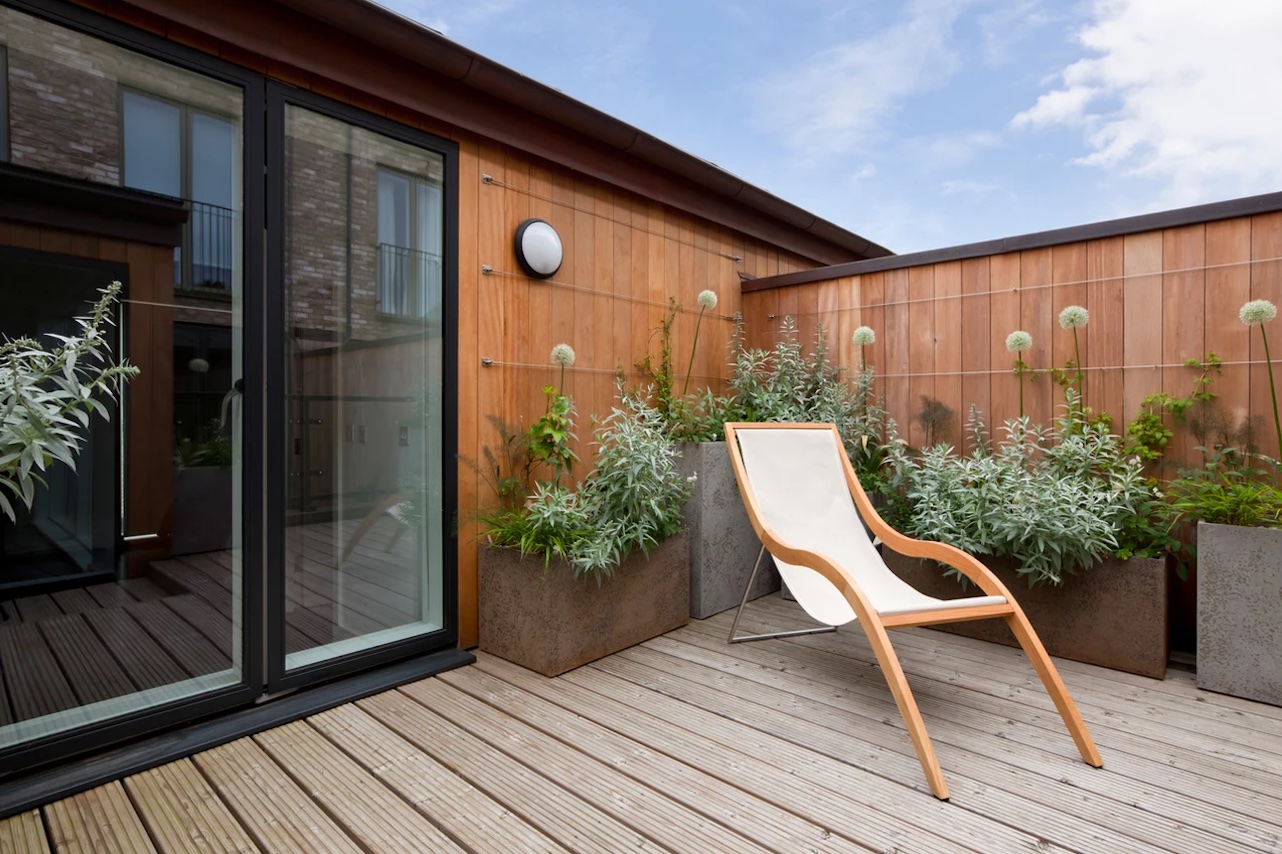
Terrazzo is a trend that is making a comeback in 2023. Terrazzo is a composite material made up of chips of marble, granite, and glass, and it offers a unique and colorful look for your countertops. Terrazzo is a durable material that is resistant to scratches and stains, making it a practical choice for any kitchen.
Terrazzo are a popular design trend that offers a unique and stylish look to any kitchen. However, as with any countertop material, there are pros and cons to consider before choosing a terrazzo countertop. Here are some pros and cons of terrazzo kitchen countertops:
Unique design:
Terrazzo countertops offer a unique and customizable design that can be tailored to fit any kitchen style.
Durable:
Terrazzo is a highly durable material that is resistant to scratches, stains, and heat.
Easy to maintain:
Terrazzo is easy to maintain and clean with a damp cloth and mild soap.
Environmentally friendly:
Terrazzo is made from recycled materials, such as glass chips, and is a sustainable choice for environmentally conscious homeowners.
Expensive:
Terrazzo is a relatively expensive material compared to other countertop options.
Prone to cracking:
Terrazzo can be prone to cracking if it is not properly installed or maintained.
Susceptible to etching:
Terrazzo is susceptible to etching from acidic substances, such as lemon juice or vinegar.
Not as heat-resistant as other materials:
While terrazzo is heat-resistant, it is not as heat-resistant as materials like granite or quartz.
In summary, terrazzo kitchen countertops offer a unique and durable option for homeowners who are willing to invest in a higher-end countertop material.

Backlit kitchen countertops are a popular design trend that can add a unique and modern look to your kitchen. Backlit countertops feature LED lights embedded in the material, creating a stunning visual effect. Backlit countertops can be found in a variety of materials, including quartz and natural stone. However, there are both pros and cons to using backlit countertops.
Here are some of the main advantages and disadvantages to consider:
Aesthetically pleasing:
Backlit countertops can create a dramatic and eye-catching effect, especially at night when the lighting can create a warm and inviting atmosphere.
Functional lighting:
Backlit countertops can provide additional lighting in the kitchen, which can be especially useful for cooking and food preparation.
Easy to clean:
Backlit countertops are typically made of non-porous materials like glass, which makes them easy to clean and maintain.
Energy efficient:
LED lighting used in backlit countertops is energy efficient and long-lasting, which can save you money on your energy bills over time.
Cost:
Backlit countertops can be expensive, especially if you choose high-end materials like marble or granite.
Installation:
Backlit countertops require special installation techniques and may require professional installation, which can add to the overall cost.
Limited design options:
The backlighting can limit your design options, as certain materials may not work well with the lighting.
Maintenance:
While backlit countertops are easy to clean, the lighting components may require occasional maintenance or replacement, which can be a hassle.
Overall, backlit countertops can be a great addition to your kitchen if you’re willing to invest in the cost and maintenance. However, it’s important to consider both the pros and cons before making a decision.